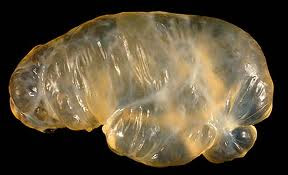Asbestos cancer (malignant mesothelioma) derives its common name on the proven fact that almost all cases than it is usually traced to asbestos exposure. It is a virulent form of malignancy, and will even be caused by experience of clothes which were contaminated elsewhere and brought home. Everything has be a little more regulated of this type with recent years, as the law requires these clothes to be left on the worksheet. Fibers of asbestos are small, sharp, and thin, and bypass hairs in the nose along with other body systems intended to filter these sorts out. Then your fibers get caught up in the lungs, stomach, and also heart sac.
 Mesothelioma prognosis
Mesothelioma prognosisThat's where asbestos cancer develops. Asbestos cancer happens in the liner membranes (called mesothelia) in the lungs, heart, and also other abdominal organs. There are 3 named types of asbestos cancer. There exists "pleural mesothelioma" (asbestos cancer from the lungs), "pericardial mesothelioma" (heart-sac asbestos cancer) and "peritoneal mesothelioma" (abdominal asbestos cancer). The lungs are just about the most prevalent, and also the heart-sac type of asbestos cancer is very rare.Asbestos cancer stems from abnormal cells in the mesothelia. At some point, these begin dividing out of control, and constitute asbestos cancer. Or else diagnosed early and treated, once it manifests it becomes very aggressive. It can also spread along with other organs (metastasize).The very first signs of asbestos cancer with the lungs (pleural) are generally a nagging cough and heart problems. Stomach fluid buildup is usually a potential symbol of abdominal asbestos cancer, and swelling there will often occur. Within the heart-sac, asbestos cancer should have symptoms including heart problems, palpitations, and coughing.Asbestos cancer has been seen to develop from as low as 2-3 months of exposure, even though it often takes from 20 to 40 years to happen, that lots of don't realize the cause.
Symptoms of mesothelioma
Most diagnosed are men between 50 and 70 years of age when told they have asbestos cancer, and usually from doing work in asbestos-related industries. Woman and kids are at times diagnosed, however often on account of secondhand exposure to asbestos.Once asbestos cancer may be diagnosed, it's essential to assess how widespread cancer has created. CT (computed tomography) scans and MRIs (magnetic resonance imaging) can help determine the disease's progression and aid the medical professionals in deciding upon suitable treatment. There are four stages of asbestos cancer progression. Diagnosis at the beginning stage leads to the best favorable prognosis. In this beginning stage, the malignancy is only found in one segment of your organ's lining (mesothelium) and hasn't spread. If the disease does return after successful treatment, the asbestos cancer is considered "recurrent mesothelioma."Not everybody come across asbestos automatically contracts asbestos cancer. If you know, however, if you have worked with this natural-occurring deadly mineral, let your physician know. If you aren't already receiving regular medical checkups, it is time to start, as keeping track of your well being is a serious aspect in catching asbestos cancer continuing and greatly increasing your probability of survival.


 Stage I of the Butchart System consists of the use of mesothelioma in the lining from the right or left lung and could also involve the diaphragm on a single side. Stage II includes the growth of mesothelioma to the chest wall, esophagus, or lung lining on bother sides. There could also be lymph nodes inside chest. The start Stage III begins once the mesothelioma surpasses the diaphragm into the lining with the abdominal cavity or peritoneum. With this stage the cancer may also get a new lymph nodes extending beyond those in stomach. Doctors identify Stage IV, one more stage, when proof multiplication of cancer to other organs (metastasis) is confirmed.
Stage I of the Butchart System consists of the use of mesothelioma in the lining from the right or left lung and could also involve the diaphragm on a single side. Stage II includes the growth of mesothelioma to the chest wall, esophagus, or lung lining on bother sides. There could also be lymph nodes inside chest. The start Stage III begins once the mesothelioma surpasses the diaphragm into the lining with the abdominal cavity or peritoneum. With this stage the cancer may also get a new lymph nodes extending beyond those in stomach. Doctors identify Stage IV, one more stage, when proof multiplication of cancer to other organs (metastasis) is confirmed.